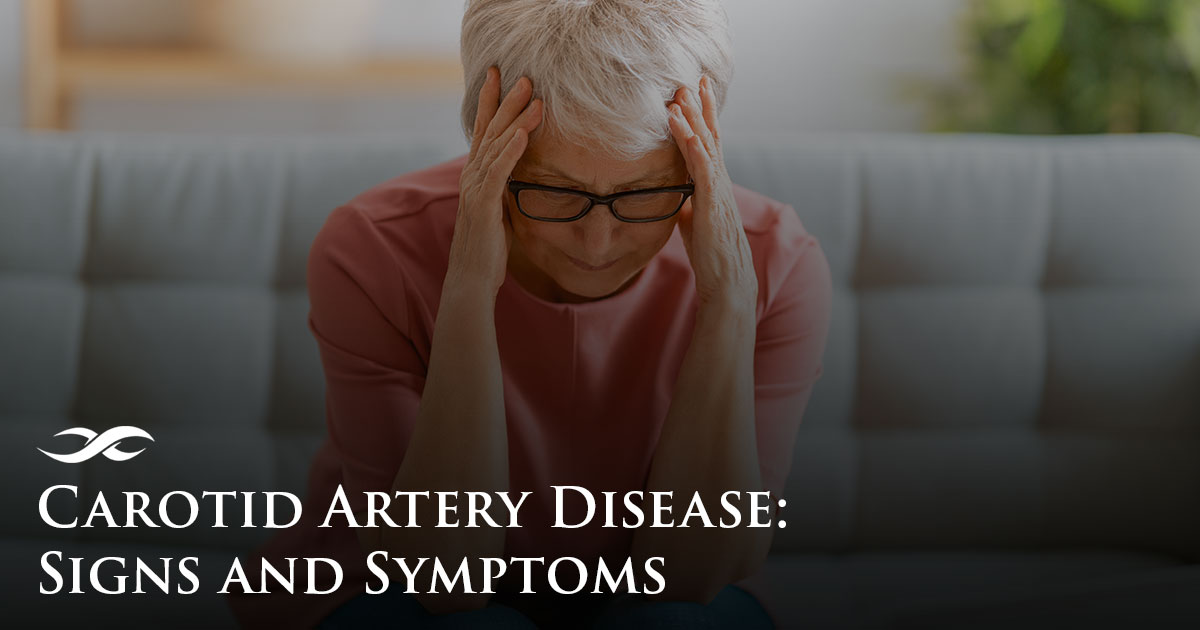Carotid Artery Disease: Signs and Symptoms

Carotid artery disease is common, with more than 200,000 new cases reported in the US each year. This condition occurs when plaque builds up inside the carotid arteries that supply oxygen-rich blood to the head and neck. This plaque buildup causes the arteries to become stiff and narrow, making it difficult for blood to flow normally.
Often, carotid artery disease will go undetected until severe narrowing or blockage of the artery occurs. Small clots can form in the artery and if these clots break free and travel to the brain, they can cause a transient ischemic attack (TIA), which is a brief stroke-like episode, or stroke. TIAs can last anywhere from a few minutes to 24 hours and are often a precursor to a stroke. According to the American Heart Association, “About 9 to 17 percent of patients who have a TIA have a stroke within 90 days.”
Signs and Symptoms
Sudden, Severe Headache
While smaller headaches are often just a nuisance, a severe headache that occurs suddenly and without cause can be an indicator of a TIA or stroke.
Numbness or Weakness in Face or Limbs
Numbness or weakness in the face or limbs, often only on one side of the body, can be a symptom of severe carotid artery disease. To test for numbness or weakness in the arms, ask the person to raise their arms and hold them for a few seconds. If one arm seems to be drifting downward, it can be an indicator of weakness. To test for numbness or weakness in the face, ask the person to smile. If one side is drooping or seems uncharacteristically uneven, it may be a sign of numbness.
Difficulty Speaking or Understanding Speech
Those experiencing a TIA or stroke may have trouble speaking or slur their words. A simple test is to ask them to repeat a short sentence and listen for any abnormality in their speech.
Dizziness or Loss of Balance
Sudden dizziness or loss of balance can indicate a TIA or stroke caused by carotid artery disease. This sudden dizziness can feel like the room is moving and often worsens with head movement.
Vision Problems in One or Both Eyes
Experiencing vision problems such as blindness, partial blindness, or double vision can indicate a lack of blood flow to the head due to carotid artery disease.
Both TIAs and strokes are emergencies and require immediate medical attention, even if the symptoms listed above have subsided.
To learn more about risk factors and treatment options for carotid artery disease, read our blog Carotid Artery Disease: What You Need to Know.
